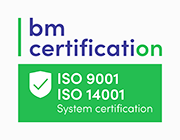Will the Eleon wind turbine become one of Estonia’s most expensive export products?
When the Estonian wind turbine manufacturer Eleon introduced its idea of launching mass production of multi-megawatt wind turbines nine years ago, many did not believe in the idea. According to Oleg Sõnajalg, board member of the company, there are now enough supporters who see value in establishing a new industry in Estonia.
You plan to establish a wind turbine industry in Ida-Viru County and thus create 1,400 jobs by 2020. Many companies complain that there is not enough skilled labour available. Are you sure that you will be able to employ 1,400 people?
There are plenty of good people in Ida-Viru County, and I am sure we will get the right people to the right positions. The sad truth is that official statistics say that there are twice as many unemployed people in Ida-Viru County as there are in Estonia on average. We understand the importance of creating new jobs in the county.
The creation of a wind turbine industry has been a subject of conversation for some time now. Your grand plan is to manufacture wind turbines, put them into operation, and then use this as a reference in the world?
Exactly. A functional reference wind farm is a necessary prerequisite for series production. To understand this market, one has to look at what the big countries all over the world are doing. Everybody is betting on wind.
The Paris Agreement suggests that a hundred billion dollars would be allocated annually to support the development of renewable energy in developing countries alone over the course of the next forty years. In addition to this, developed countries will invest ten times this amount in their own renewable energy. This is a rapidly expanding sector, its scale is massive.
Has there already been interest in your wind turbines from other parts of the world?
The Eleon wind turbine has been patented in more than 150 countries all over the world. It was developed in collaboration with leading European scientists in the respective field. People from Denmark, Latvia, Germany, and other countries have visited the Salme wind farm on the island of Saaremaa to check out the prototype turbine, which runs on new technology and is the tallest in the Baltic region. There has been great interest in the project.
You performed a comparison of wind turbines of the German company Enercon and your turbines. The result was that the Estonian-manufactured turbine is more efficient. What was the exact measurement period and what were the results?
We must first emphasise that Enercon is one of the top three wind turbine manufacturers in the world. We wanted a comparison with an absolute market leader. The four most advanced 3 MW E-101 wind turbines by Enercon installed in the Mäli wind farm, which was completed only in February last year, were therefore the best choice. I repeat again – these are the most high-end wind turbines one could find today.
What was the result of the comparison?
As Elering’s comparable data about Mäli are only available from March onwards, we compared the data available for March – December 2015. During this period, one modern wind turbine of the German manufacturer produced an average of 6,803 MWh of energy. Within the same period, the Estonian Eleon wind turbine of equal capacity produced 9,103 MWh of energy. The wind turbine developed in Estonia and patented in 150 countries thus produced 33.8% more energy in the same period than the most advanced wind turbine of one of the world’s biggest manufacturers. And I am not ashamed to say that certain conditions were not in favour of us and the difference could have been even bigger.
Is the Eleon turbine also more expensive than the Enercon turbine? How do you price your turbines?
The Eleon wind turbines are very competitive within their price range. Compared to the same Enercon model, for example, we are able to offer a more efficient turbine for each euro spent.
How many turbines do you expect to produce annually?
We expect our yearly production capacity to be 60 turbines in 2020. These turbines will likely be one of the most expensive products exported from Estonia. But that is the way it should be in our opinion! Estonia will never achieve the living standard of the Nordic countries by exporting wooden spoons.
What stage are your plans currently in?
Construction works in the reference wind farm to be established on the territory of the former Aidu quarry have already begun. The first turbines will be up before the year’s end. Together with the erection of the Aidu reference park, we will be able to gradually bring more of the production to Estonia. By 2020, we plan to reach a production capacity of 60 multi-megawatt wind turbines that would have the text “Made in Estonia” written on the base.
How has the state commented on the wind turbine industry so far? What kind of support do you expect from the state?
Few people believed in the idea of mass producing multi-megawatt wind turbines in Estonia when we first came up with the idea nine years ago. I remember that I tried to convince the managers of Skinest Energia in 2007 to pick an Estonian Eleon wind turbine over a wind turbine provided by WindWind, another newcomer on the market. On that occasion, they chose four 3 MW WindWind turbines for the Virtsu wind farm. It saddens me to say this but it was obviously a bad choice, as the company has gone bankrupt and the wind turbines of that project have yet to be declared suitable for the grid, nor have they received any support.
Attitudes have changed since we started with the installation of the prototype in the wind farm of Salme in 2012. We can now say that we have many supporters who see value in creating a new industry in Estonia. 1.5% of Estonia’s GDP is the contribution of a functional wind turbine industry to Estonia’s economy that we are talking about here. The segment of the country that is considering increasing the country’s exports is already more or less in agreement. Overall, an industry that produces and exports renewable energy devices is in the interests of the Estonian economy, environment, and even national security.
What will your product portfolio look like? Do you intend to manufacture large wind turbines for wind farms or will industrial enterprises be able to commission individual, smaller versions for themselves?
Our philosophy is that if we do something, we must do that to the best of our capability. For example, we use the same technology in the filter systems of our wind turbines that used to be employed in nuclear power plants; we replaced the outdated gearbox technology with a direct drive power transmission as the priority, etc. We intend to keep our focus on large multi-megawatt wind turbines and maintain our position as technology leaders. The larger the turbine, the bigger the advantages of our patented solution. We do not intend to build smaller turbines than the current 3 MW capacity turbine. On the contrary, we aim for bigger turbines in the future.


